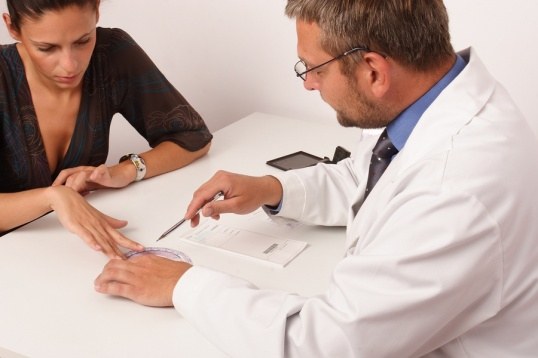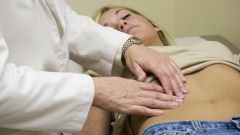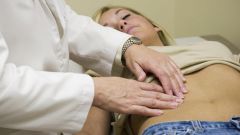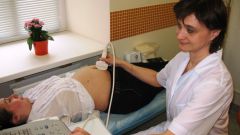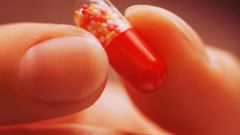Instruction
1
In healthy women of childbearing age during menstrual cycle in the ovaries are forming follicles. At the time of ovulation from one of them enters the egg while the remaining follicles become overripe and cease to function. When polycystic ovaries the egg Matures, the follicles rupture (ovulation) does not occur, and they are filled with fluid, forming cysts. The ovaries may increase in size up to 5 times.
2
The causes of polycystic not been fully elucidated, but it is known that the occurrence of diseases associated with excessive production of insulin by the pancreas. In turn, this causes excessive production of androgens - male hormones that causes hormonal imbalance. Also plays an important role hereditary predisposition.
3
Symptoms of polycystic ovaries can occur at any age. If the disease begins in the period of menstrual function, there is a prolonged absence of the first menstruation, irregular monthly cycle, heavy bleeding. Also concerned about oily skin and hair, presence of acne, for no apparent reason, it may increase the weight by 12-15 kg.
4
If the disease develops in adulthood, the main clinical symptom is menstrual cycle, when the break between two periods can be more than 35 days, a woman can not get pregnant and bear children. Because elevated androgen levels, there is a pilosis on man's type - on the chest, back, face, extremities, but this symptom may not be in all patients. Also characterized by weight gain, localized fat in the waist, male-pattern baldness.
5
Some women worry about aching pain in the pelvic area, the skin darkening on inner thighs, under the Breasts, in the groin area. Half of the women who have polycystic ovaries, to 45-50 years formed diabetes type 2 diabetes, high cholesterol, and all patients at increased risk of developing cancer of the endometrium (inner lining of the uterus).
6
To confirm the diagnosis of polycystic ovaries, the doctor prescribes ultrasound of the ovaries, the General analysis of blood, analysis of blood androgen levels, sugar and cholesterol. Treatment depends on the severity of symptoms and level of male sex hormones, the treatment goal is to achieve the maturation and release of eggs. For this purpose, hormonal drugs, which stimulate ovulation and allow you to achieve regularity in 70% of women, and the ability to get pregnant - at 40%.
7
Also used drugs that regulate the pituitary gland, their action decreases the size of the ovary. In subsequent hormonal medication to stimulate ovulation. This treatment restores ovulation in 95%, and the ability to get pregnant by up to 65%.
8
In some cases, contraceptives are used to provoke regular menstruation. There are contraceptives that contain a small amount of antiandrogens - substances that block the action of male sex hormones. They allow you to get rid of excess hair growth, oily skin and acne. Sometimes, surgical treatment by laparoscopic method - resection of the ovary to the burning of the tissue current.
